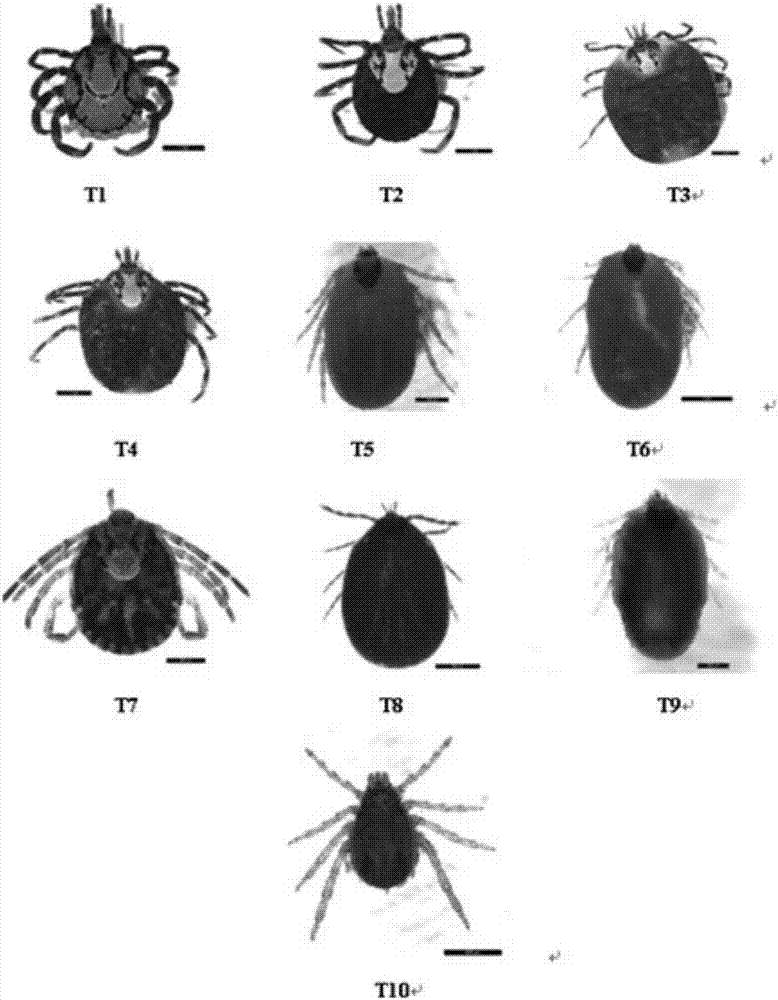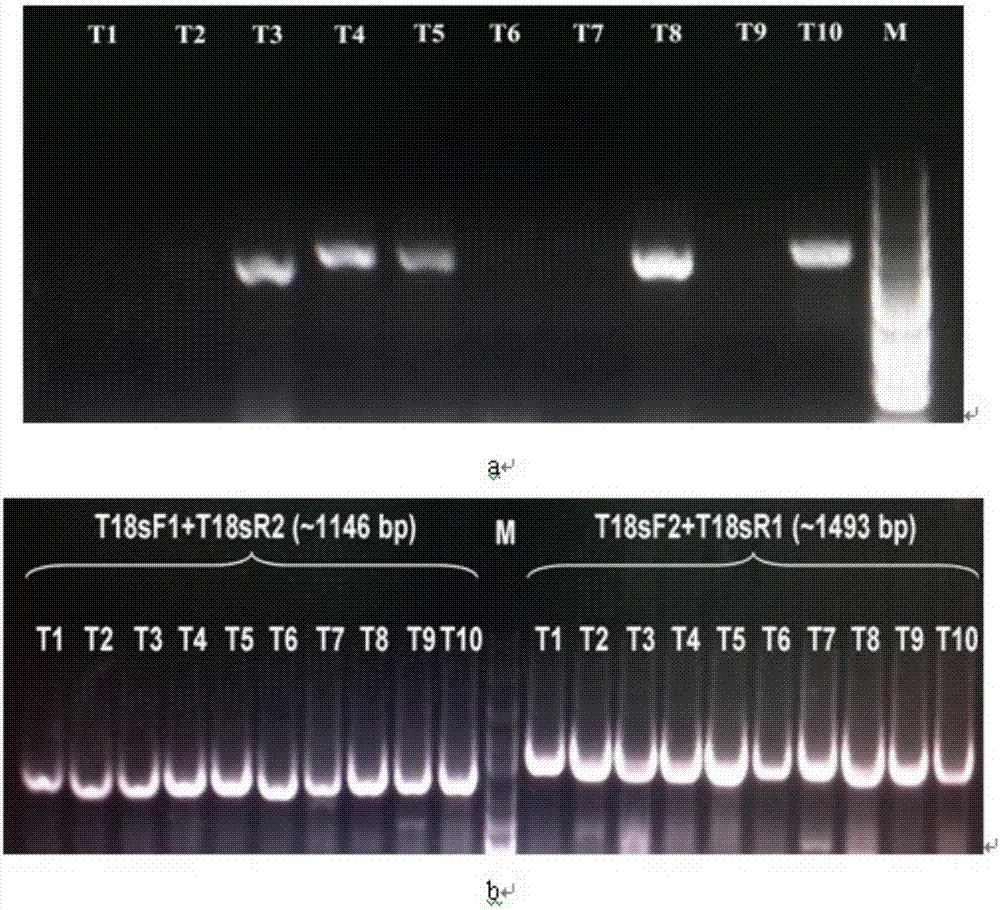A tick nest PCR specific primer and tick nest PCR identification method
An identification method and specific technology, applied in the field of biology, can solve problems such as lack of molecular biology methods, and achieve the effect of shortening the required time
- Summary
- Abstract
- Description
- Claims
- Application Information
AI Technical Summary
Problems solved by technology
Method used
Image
Examples
Embodiment Construction
[0027] Design two pairs of specific primers based on the conserved region of tick 18s rRNA sequence
[0028] T18sF1:5`-GTAGTCATATGCTTGTCTC-3`;
[0029] T18sR1:5`-TCCGCAGGTTCACCTACGGA-3`;
[0030] T18sF2:5`-CAARTGTCTGCCYTATCAACT-3`;
[0031] T18sR2: 5`-CTTCCGTCAATTCCTTTAAG-3`.
[0032] Nested PCR specific steps
[0033] (1) Ticks
[0034] Ticks were intercepted from imported raw cowhide at Wenzhou Port, and preliminary morphological typing was carried out.
[0035] (2) Extract the tick genome
[0036] After morphological identification, one tick of each species was taken, and DNA was extracted from the genome according to the instructions of the genome extraction kit (ZYMOL), and the samples did not need to be treated with RNase.
[0037] (3) Cloning strategy
[0038] Cloning is done in two steps, according to figure 1 as shown,
[0039] ① Use tick genomic DNA as template (2 μl), T18sF1+T18sR1 as the first set of primers (1 μl each), LAtaq enzyme (0.25 μl), dNTP (2 μl)...
PUM
 Login to View More
Login to View More Abstract
Description
Claims
Application Information
 Login to View More
Login to View More - R&D
- Intellectual Property
- Life Sciences
- Materials
- Tech Scout
- Unparalleled Data Quality
- Higher Quality Content
- 60% Fewer Hallucinations
Browse by: Latest US Patents, China's latest patents, Technical Efficacy Thesaurus, Application Domain, Technology Topic, Popular Technical Reports.
© 2025 PatSnap. All rights reserved.Legal|Privacy policy|Modern Slavery Act Transparency Statement|Sitemap|About US| Contact US: help@patsnap.com



